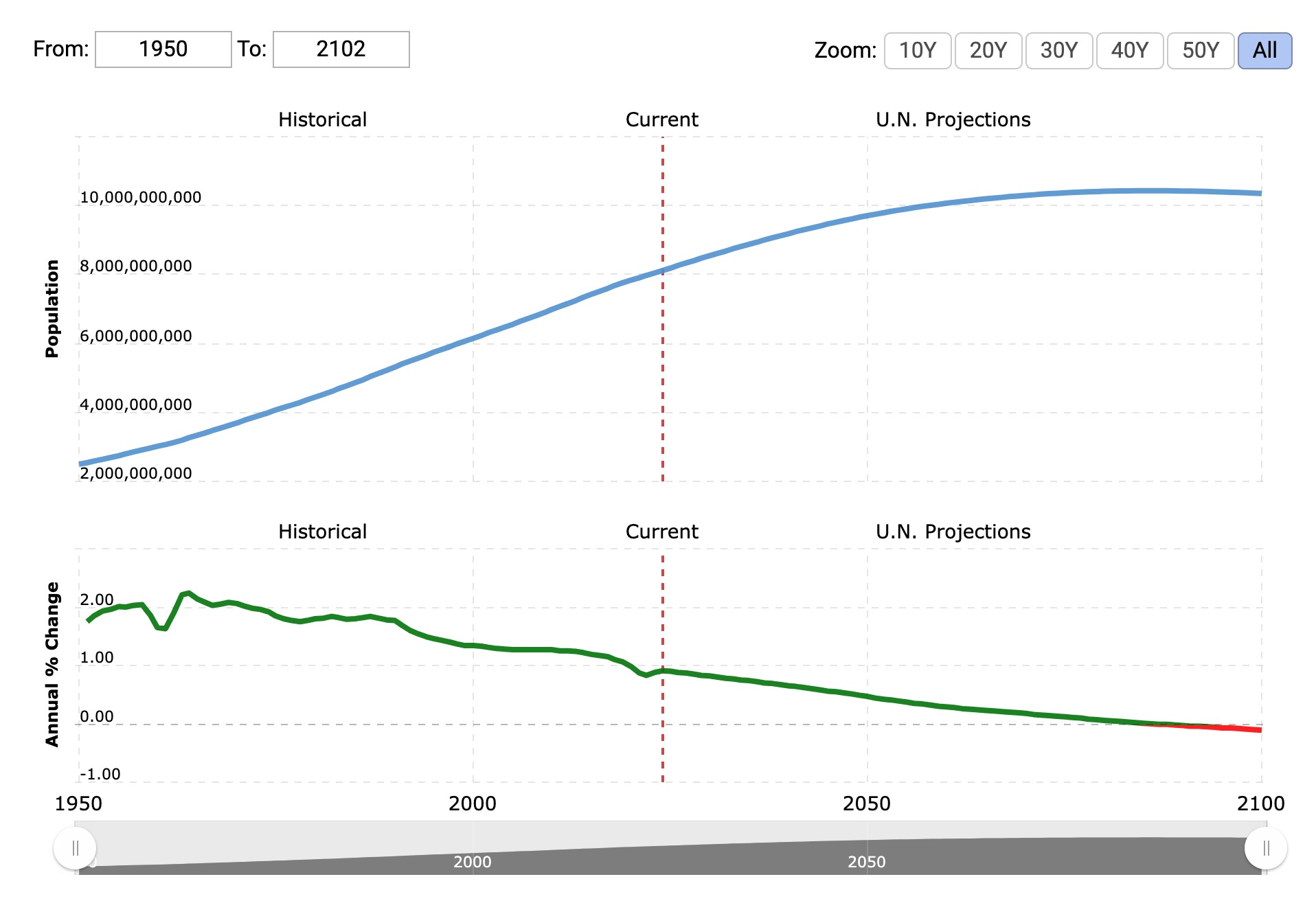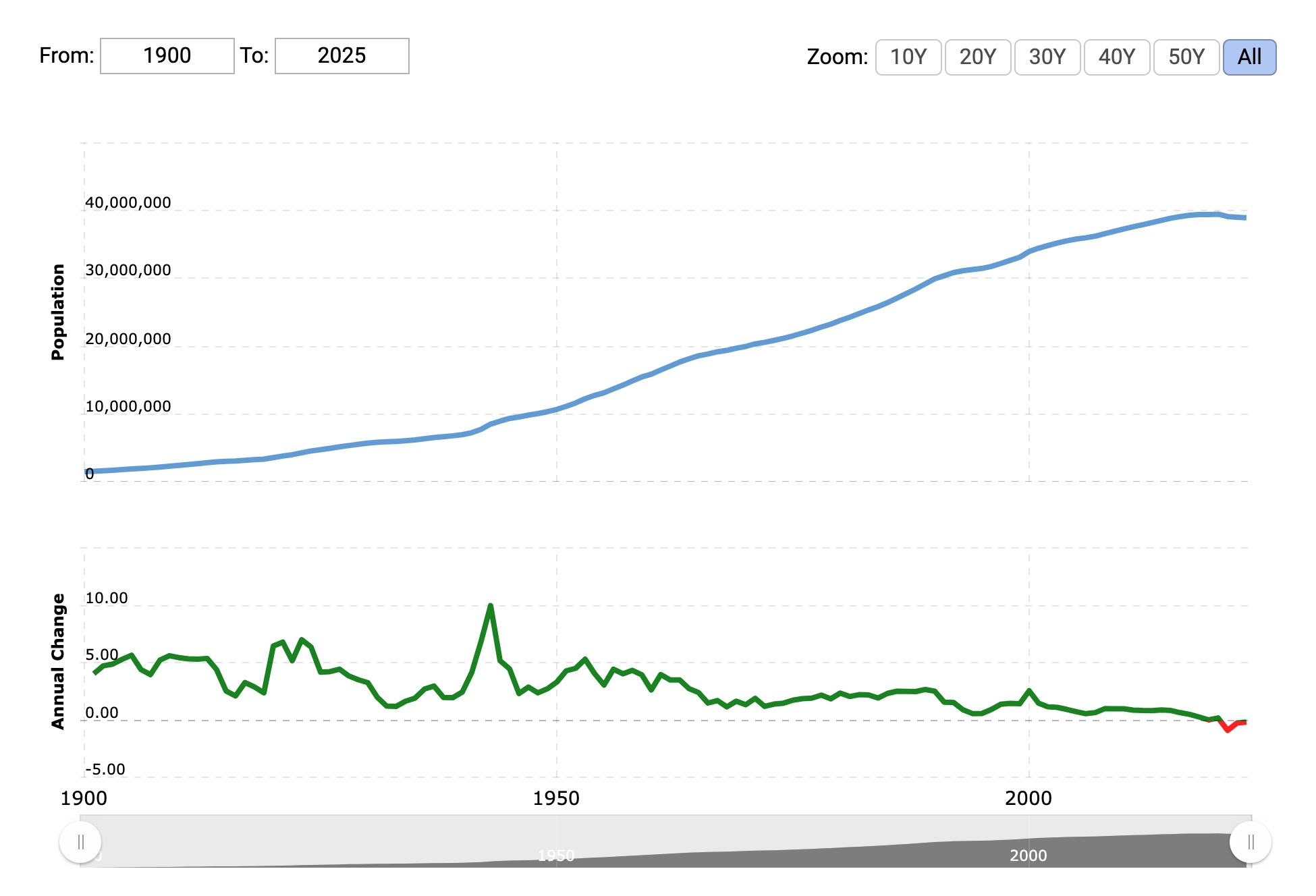Comments
GELFAND’S WORLD - It's been interesting watching the weather forecasters telling us about the latest 500 year event. Some of them even mention global warming. But there is one thing that is missing from their remarks, a factor which ties together the weather, the cost of housing, and even the homelessness problem.
That factor is human population
The Macrotrends websites provide the story in graphic form. Back in 1950, world population was right around 2 billion people. It has grown steadily, quadrupling in the interim, so that there are now 8 billion of us.

If we were to look at California alone, we would see a pretty similar picture, with the population growing from just over 10 million in 1950 to nearly 39 million today.

The effects are predictable and obvious
We have 4 times as many people chasing the same resources, whether we are looking at the entire world or here in California. When it comes to available land to build houses and apartment buildings, the effect is clear, even if our elected officials don't want to recognize the connection.
The effect on the atmosphere is also clear and tragic: More people burn more fossil fuel, putting millions of tons of carbon dioxide into the air.
Even when it comes to the homelessness problem, the connection is there, because simple economics drives the construction of new housing to provide living space for the middle class, thereby displacing the people who were living in subsistence level housing. There is probably an analogous effect in terms of more and more people chasing after a limited number of unskilled jobs.
How has the world been dealing with the population issue? It is a curious story, to be sure. In 1968, Paul and Ann Ehrlich wrote The Population Bomb. At the time, the world population was 3.5 billion. The book has been criticized for its alarmist tone, but it did manage to point out that when the population doubles and doubles again, something has to give.
Paul Ehrlich guessed that the 1970s would involve a continuous era of famine and war. This was an overreach, because technology was used effectively to coax higher levels of agricultural productivity. Many of us remember the term "the Green Revolution." But as critics have pointed out, the green revolution relied on increasing use of fossil fuels to drive mechanized farming and fertilizer production. The secondary effect was increased carbon dioxide emissions, and thus a major contribution to global warming.
In brief, if the world population had merely doubled since 1950, we wouldn't have the same level of global warming. If the California population had merely doubled, we wouldn't be having such extreme effects on the cost of housing or on the level of homelessness.
Finally, if we look at United States population growth since 1950, we find that it has more than doubled, from 150 million to 340 million. That's slower growth than for California or for the whole world, but it is substantial in its own right. That growth has contributed to the carbon dioxide buildup that results in global warming, because North Americans burn fossil fuels at a high level.
Making the connection
It's curious (and frustrating) that as the world wakes up to the problem of global warming, there is so little comment or connection to worldwide population. Perhaps talking about restricting population growth has become sort of taboo. Perhaps it is just recognized to be a difficult nut to crack, and is left to solve itself. Or perhaps it is simply being left to the individual nations to consider, each in its own way. But left unchecked, we will outgrow our resources even as we bake the surface of the planet.
(Bob Gelfand writes on science, culture, and politics for CityWatch. He can be reached at [email protected].)






